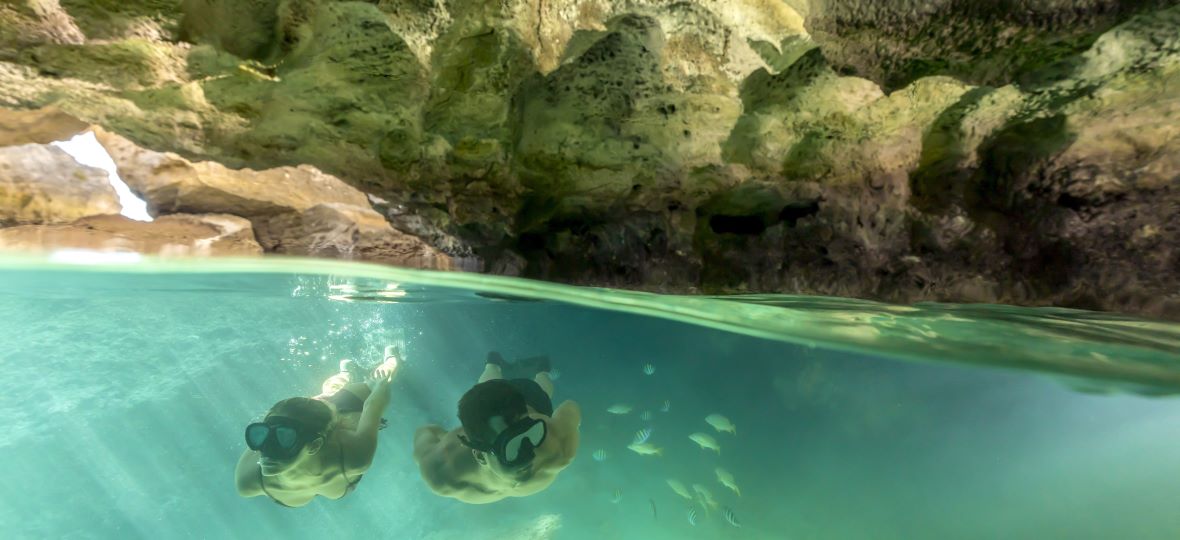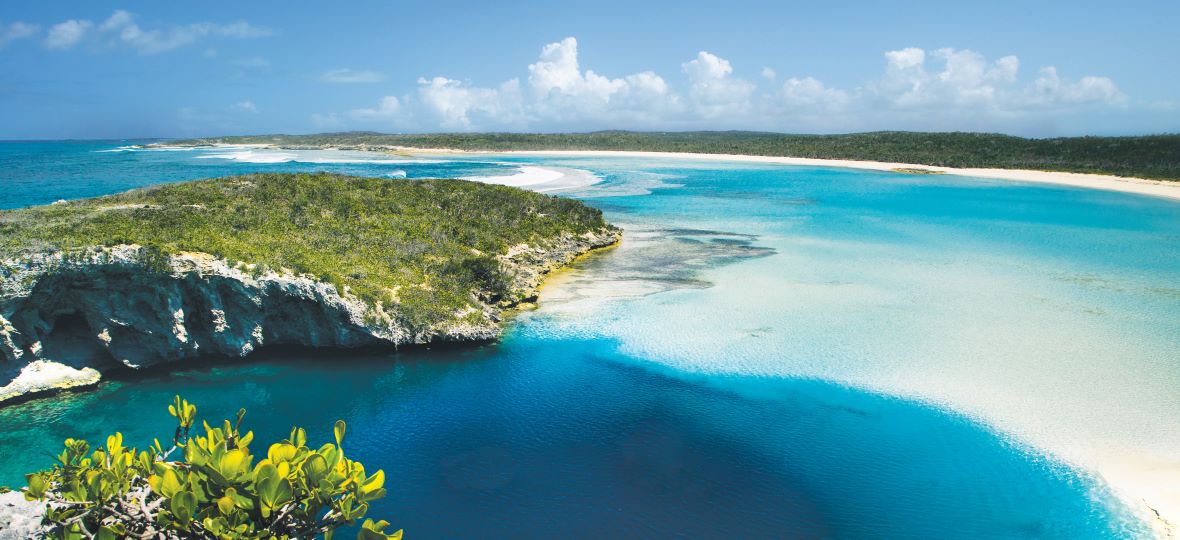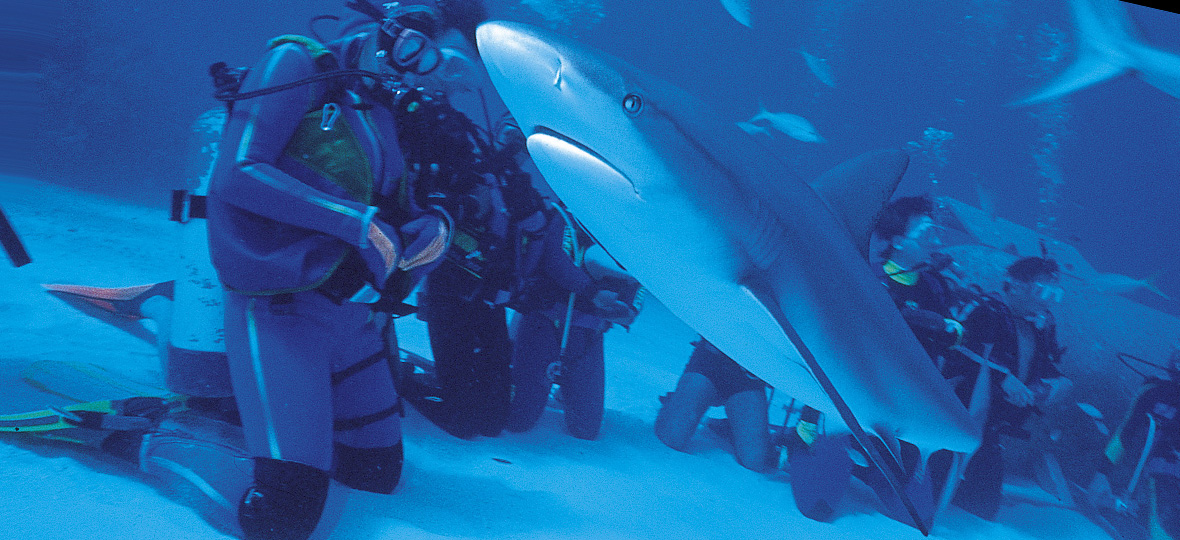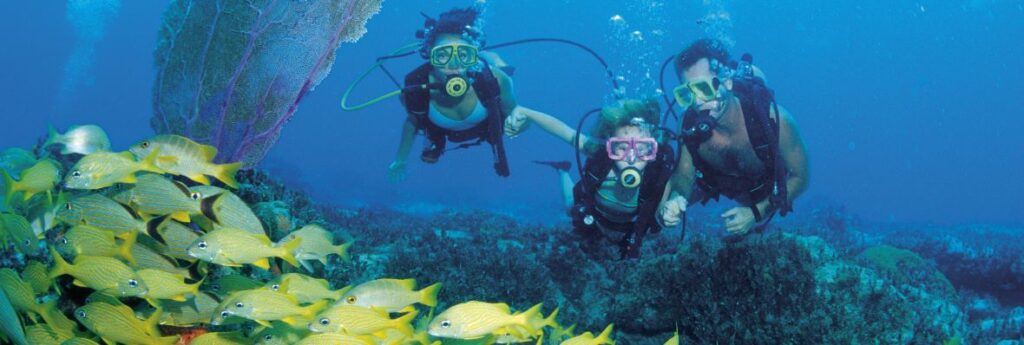With over 700 islands and cays, all of them by their very nature hemmed in by H20, it’s not a stretch to say that The Bahamas is a paradise for underwater adventure. Blessed with some of the clearest water in the world and an abundance of marine life, it’s – to adapt a memorable marketing slogan – better down where it’s wetter in The Bahamas.
Hidden beneath the Caribbean waves, off pristine white sand beaches or in isolated cays, the islands offer a range of diving and snorkelling experiences, accessible to both first-timers and the more advanced.
There are more than a thousand blue holes, underwater caves, and wrecks (plane and ship) to explore in one of the least understood and explored ecosystems on the planet. Here are just a few suggestions of some of The Bahamas’ best underwater sites to dive into:
Wreck of the Hesperus-Turtle Wreck, Bimini
Bimini boasts one of the top 10 wreck dive sites in The Bahamas. The Hesperus, a cement barge that sunk with all its cargo, is a favourite with divers and underwater photographers. Getting its nickname from the loggerhead turtles that gather on the ship at night, this shallow wreck receives plenty of sunlight, making it an ideal home for hundreds of tropical fish and coral. With the top of the wreck less than 3 m. under the surface and warm water temperatures year-round, this hot spot is perfect for both scuba divers and snorkelers.
Experts know the best time to explore the Hesperus is at night. Visitors have described night dives as “the best dive of their Bahamas trip.” With the ocean current at bay, loggerheads, yellow rays, blue and red squids surround the wreck. Divers will encounter stingrays, barracudas, red snappers, lobsters, kingfish and nurse sharks. There is a chance that one may also come face-to-face with a blacktip or hammerhead shark swimming through the wreck.
Thunderball Grotto

The famous ‘James Bond Cave’ in the Exuma Cays was named after the franchise’s spy film “Thunderball” and has been the film location for not one, but two 007 spy movies.
Here, amongst brilliantly coloured coral reefs, lives an abundance of exotic marine life including yellowtail snappers, angelfish and sergeant majors. The impressive cave system, unique for its small, almost hidden entrance – though easily accessible – is a favourite amongst tourists for snorkeling, diving and wading.
Thanks to its Hollywood past, the cave has become a hot vacation spot a requisite stop on Cays day-cruises, including on the way to see the area’s famous swimming pigs.
Cessna Wreck/Wall, Nassau
If exploring an underwater aircraft is on the diving bucket list, consider a diving trip to Nassau to discover
In Nassau, a downed twin-engine Cessna 310 plane – intentionally crashed and sunk into the Caribbean Sea by a stunt pilot – as a film site for one of the Jaws films, is a great wreck dive; and only 30 m. away stands a beautiful sponge-covered reef, dubbed the Cessna Wall.
With clear visibility and warm waters this brilliant dive is a great opportunity to swim amongst coral reefs and exquisitely coloured fish divers might have their own Jaws “encounter” – meeting a friendly gray reef shark.
Dean’s Blue Hole, Long Island

The world’s second deepest blue hole is located near Clarence Town on the coast of Long Island. The maximum depth of most known blue holes is 110-metres making Dean’s 220-m. drop off extraordinary. The site is enclosed on three sides by a natural rock amphitheater with a blue lagoon and white sand beach on the fourth side. Ideal for both diving and snorkeling, turtles, seahorses, tarpons and many more tropical fish will meet visitors and with calm waters and warm temperatures, it’s like being in a salt-water swimming pool.
The Vertical Blue Free Diving Competition has been held annually at Dean’s Blue Hole since April 2008. This is an international judged competition and many world and national records have been set here during the sporting event.
DC3, Nassau
If you watched the 2005 film “Into the Blue,” starring Paul Walker and Jessica Alba, then this dive site might look familiar – especially from the suspenseful scene when a trio of divers discovered the crashed aircraft. In The Bahamas, it is not uncommon for planes and boats to be sunk for films or as attractions for divers. Film producers acquired this 1932 DC3 aircraft to be used as the backdrop for various underwater action scenes. The site is now an artificial reef and the perfect setting for Instagram-worthy selfies, not Hollywood movies.
Although weather and salt water has deteriorated the integrity of the aircraft over the years, it is still an extraordinary dive site. Clear blue waters provide full visibility of the magnificent coral reefs that expands along the full length of the dive. Located in the southwestern end of New Providence, this shallow water excursion is accessible for beginner and advanced divers. The best time to visit is during high season, which runs from mid-December to April.
The Lost Blue Hole, Nassau

A natural blue hole formed during the ice age, The Lost Blue Hole is regarded as one of the most unique and iconic dives on the islands of The Bahamas and one of the most unusual in the world. This blue hole is known for its expansive dimensions, a 30-m.-diameter opening and overwhelming depth of 60 m. But don’t let this intimidate you, the dive is accessible for every diver, from beginner to expert.
Visible from the ocean surface The Lost Blue Hole is another vast world underneath the sea with one of the top coral reef sites. Thanks to the site’s sheltered walls there is an abundance of marine species amongst which divers can swim. Nurse sharks, reef sharks, angelfish, manta rays, large sea turtles and amberjacks all call the hole home.

